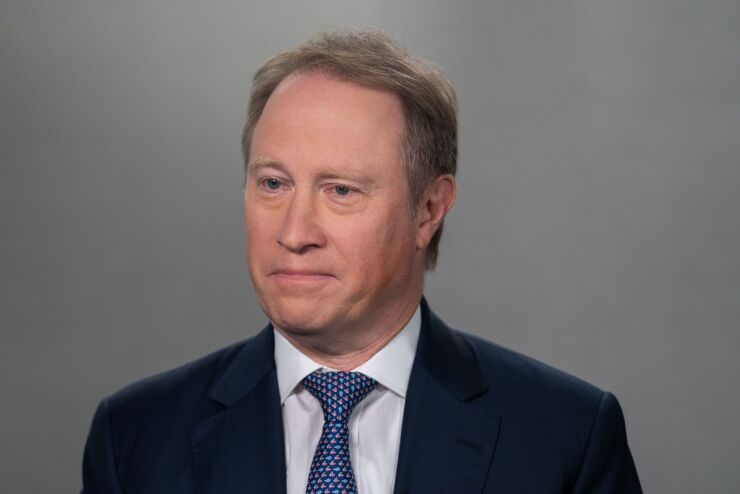Speaking on Monday at the Morgan Stanley Annual U.S. Financials, Payments & Commercial Real Estate Conference in New York, Pick said some of the firm's greatest opportunities lie in its
Pick said Morgan Stanley at Work is now managing roughly $1 trillion in equity assets, about half of which is vested, meaning the owners can sell the assets on public markets. Competitors, meanwhile, oversee roughly another $1 trillion on behalf of employers.
But Morgan Stanley's best bet for growth doesn't necessarily lie in pushing those rivals to cede some of that market share. Rather, it's in inducing employees who are already benefiting from Morgan Stanley at Work to move more of their assets over to the firm's wealth management business, Pick said.
Pick estimated that Morgan Stanley at Work could be a conduit for bringing in as much as
READ MORE:
"That's $5 trillion of wealth held by those same people who work at company XYZ whose comp plan we already administer," Pick said. "That's what's exciting."
The funnel
Morgan Stanley often talks about its
Pick said employers representing half of the market capitalization of all companies listed on the S&P 500 stock index now use Morgan Stanley at Work to manage their equity compensation plans. When their employees' shares vest and are sold on the public market, he said, the money they make is placed into an E-Trade account.
Those same workers will probably have questions requiring the expertise of a financial advisor, he said.
"How do you think about withholding?" Pick gave as an example. "How do you think about potentially a charitable donation? How do you think about reinvesting proceeds without too much tax friction? Those FAs are ready for when the individual moves to a higher level. OK. So the entire funnel of wealth is now captured inside of workplace."
On the way to $10 trillion
Ted Pick took over the CEO mantle at Morgan Stanley at the start of the year and inherited from his predecessor, James Gorman, his ambition of bringing the firm's assets under management total to $10 trillion. Morgan Stanley has been
Tim Welsh, the CEO of the
"And if you have that, if you have a relationship with them already, you have a foot in the door," he said. "That's the lowest cost and most direct way to grow organically. So it makes a ton of sense."
Welsh said Morgan Stanley will need sources of business as more and more clients start to question the value proposition for products like
"They are very high cost," Welsh said. "And in a world where there is ever more transparency over asset management fees, they'll eventually either have to cut prices or offer more options."
Reaching 'escape velocity'
Pick isn't the only executive at Morgan Stanley to stake some of its future on its workplace offerings. Speaking with analysts in January about the firm's fourth quarter 2023 earnings,
"In the prior three years, we saw an average of $50 billion of workplace assets migrate to the advisor-led channel on an annual basis," Yeshaya said. "This year, client migration was up 25% year over year, despite economic headwinds."
Looking at Morgan Stanley as a whole, Pick said he sees no reason to diverge from the course Gorman put the firm on following the 2008 global financial crisis. Pick said much of Gorman's time at the helm was marked by the need to integrate firms Morgan Stanley was acquiring on the way to building up its wealth management business.
It completed its purchase of the
"We've really won or are one of the big winners in the advisor channel, one of the big winners of the direct channel — the self-directed channel — and a winner in workplace," Pick said. "And when you think about all those combined, it kind of feels like we got a wealth management machine that is at escape velocity."






